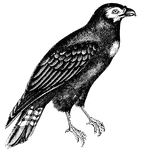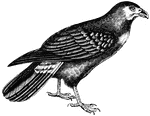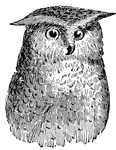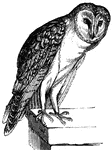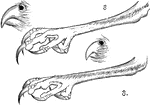
The Beaks and Claws of a Burrowing Owl
"Speotyto. Burrowing Owls. tarsi long, about twice as long as the middle toe without its claw, very…

Birds of Prey
"Birds of Prey" are birds who hunt for their food (other animals or meat) in flight. When they find…

Red-tailed Buzzard
"Buteo borealis. Red-tailed Buzzard. "Hen Hawk". Upper surface of tail rich chestnut, with white tip…
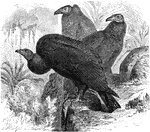
Turkey Buzzard
"Cathartes aura. Turkey Buzzard. Blackih-brown, grayer on the wing-coverts; quills black, ashy-gray…
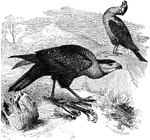
Caracaras
"Polyborus auduboni. Common Caracara. General color blackish, the throat, neck all around, and more…
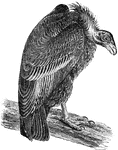
California Condor
"Pseudogryphus californianus. California Condor. Adult: Blackish, the feathers with browner tips or…

American Sea Eagle
The Eagle is endowed with immense muscular vigor, and is therefore, able to carry off prey of considerable…
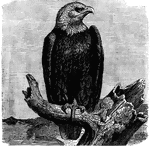
Bald or White-headed Eagle (Haliaetus Leucocephalus)
"Its flight is as powerful as that of the golden eagle, and its adroitness and strength are even greater.…

Bald Eagle
"Haliaetus leucocephalus. White-headed Sea Eagle. "Bald Eagle." "Bird of Washington". Adult: Dark brown;…

Golden Eagle
The Eagle is endowed with immense muscular vigor, and is therefore, able to carry off prey of considerable…

Golden Eagle
The Eagle is endowed with immense muscular vigor, and is therefore, able to carry off prey of considerable…

Imperial Eagle
The Eagle is endowed with immense muscular vigor, and is therefore, able to carry off prey of considerable…

Imperial Eagle
The Eagle is endowed with immense muscular vigor, and is therefore, able to carry off prey of considerable…
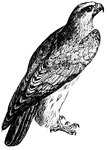
Falcon
Falcons are a group of birds of prey that vary in size from the falconet to the gyrefalcon. They can…
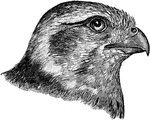
Prairie Falcon Head
"Falco mexicanus. American Lanner Falcon. Prairie Flacon. A medium-sized species, distinguished from…
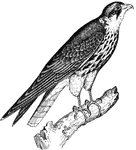
Hobby Falcon
With sharp claws, penetrating vision, and enormous strength, it is easy to understand that these birds…
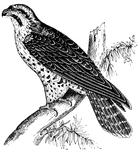
Peregrine Falcon
With sharp claws,penetrating vision, and enormous strength, it is easy to understand that these birds…
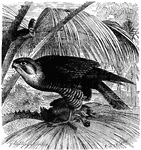
Red-Necked Falcon, or Turumdi (Falco Chiquera)
"The falcons, it may be said, realize the ideal of a bird of prey. They feed only on living animals,…

Sultan Falcon
With sharp claws,penetrating vision, and enormous strength, it is easy to understand that these birds…
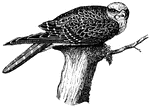
Sultan Falcon
With sharp claws,penetrating vision, and enormous strength, it is easy to understand that these birds…

Falcons
"Falcons. Bill furnished with a sharp tooth and notch near the end of the cutting edge of the upper…
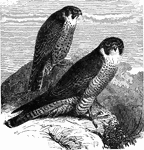
Two Lanner Falcon
"Falco mexicanus. American Lanner Falcon. Prairie Flacon. A medium-sized species, distinguished from…
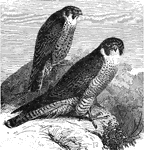
Two Peregrine Falcons
"Falco peregrinus. Peregrine Falcon. Duck Hawk. Great-footed Hawk. A medium-sized falcon, about as large…

Peregrine Falcon Small
"Falco peregrinus. Peregrine Falcon. Duck Hawk. Great-footed Hawk. A medium-sized falcon, about as large…
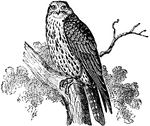
Gerfalcon
"The Gerfalcon is the most powerful of the Falcon tribe. The falcons, it may be said, realize the ideal…
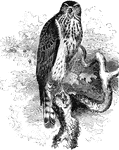
American Goshawk
"Astur atricapillus. American Goshawk. Blue Hen Hawk (adult). Chicken Hawk (young). Adult: Above, dark…
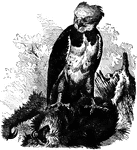
Harpy-Eagle (Harpyia Destructor)
"The Harpy or Crested Eagle is the model species of the genus to which it belongs. It measures nearly…

Harrier Ear Parts
"Circinae. Harriers. Face surrounded with an incomplete ruff (as in most owls); orifice of ear about…
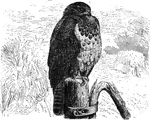
European Hawk
"Buteo vulgaris. hawk of Europe, Upper parts dark brown, very variable in shade according to season…

Marsh Hawk
Birds of prey usually have stout, hooked beaks and sharp, curved claws, fitting them for clutching and…

Marsh Hawk
"Circus cyaneus hudsonius. American Marsh Hawk, Harrier. Blue hawk. Adult Male: In perfect plumage pale…
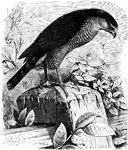
Sharp-shinned Hawk
"Accipiter fuscus. Sharp-shinned Hawk. "Pigeon" Hawk. Above, dark plumbeous, slate-color, or bluish-gray,…
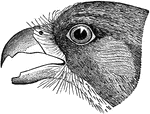
Sparrow Hawk
"Falco sparverius. Rusty-crowned Falcon. Sparrow Hawk. Adults: Crown ashy-blue, with a chestnut patch,…
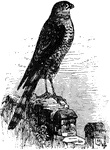
Sharp-shinned Hawk - Small
"Accipiter fuscus. Sharp-shinned Hawk. "Pigeon" Hawk. Above, dark plumbeous, slate-color, or bluish-gray,…

Common Kestral
Falco tinnunculus. Common Kestral. This bird is a European bird of prey. Plumage on upperside, chestnut-brown…
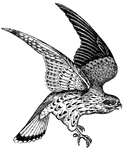
Kestrel
With sharp claws, penetrating vision, and enormous strength, it is easy to understand that these birds…

Red Kite Resting on a Branch by a Body of Water
"Milvus milvus, the Red Kite or Forked Tail Glead of the Old World, ranging from the Atlantic Islands-except,…
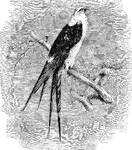
Swallow-tailed Kite
"Elanoides forficatus. Swallow-tailed Kite. Adult: Head, neck, band on rump, and entire under parts,…
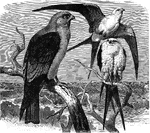
Two Swallow-tail and One Mississippi Kites
Two Swallow-tail and One Mississippi Kite. "Ictinia subcaerulea. Mississippi Kite. General plumage plumbeous…
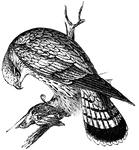
Merlin
With sharp claws, penetrating vision, and enormous strength, it is easy to understand that these birds…
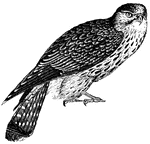
Merlin
With sharp claws, penetrating vision, and enormous strength, it is easy to understand that these birds…
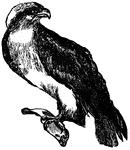
Osprey
This bird lives on fish so is commonly found near water. Its nest is composed of sticks, seaweed, and…

Osprey
This bird lives on fish so is commonly found near water. Its nest is composed of sticks, seaweed, and…
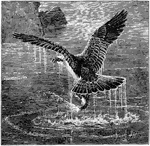
Osprey
An Osprey catching a fish. "Pandion haliaetus. Fish Hawk. Osprey. Adult. dark vandyke- brown, blackening…
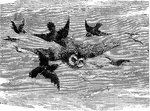
The Mobbing of an Owl
An adult owl being mobbed by a group of smaller birds. Mobbing occurs when smaller birds, in fear, will…
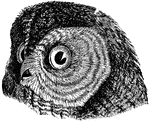
Barred Owl
"Strix nebulosa. Barred Owl. Hoot Owl. American Wood Owl. Toes fully feathered, nearly or quite to the…

Burrowing Owl
"Speotyto cunicularia hypogae'a. Burrowing Owl. Adult: Above, dull grayish-brown, profusely spotted…
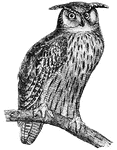
Great Horned Owl
Horned owls are distinguished by two tufts or horns of feathers placed on each side of their head.

